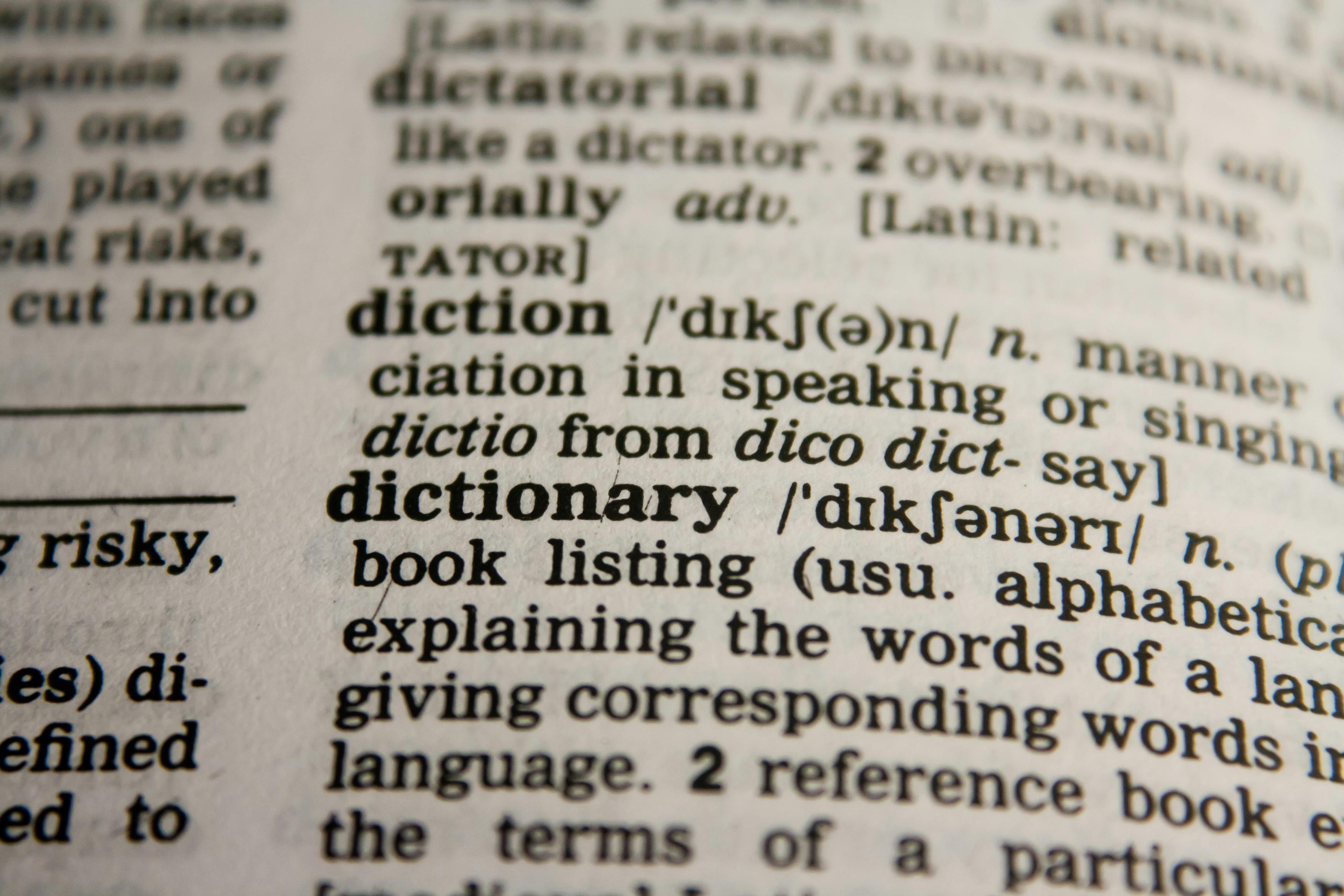Introduction
Have you ever been stumped by the intricate sounds and tones of Mandarin Chinese? Ever wondered how to perfect your pronunciation and sound like a native speaker? Well, the key lies in mastering Chinese Pinyin IPA.
In this comprehensive guide, we delve into the nitty-gritty of Pinyin IPA - a powerful system that can help you nail the pronunciation of Mandarin Chinese. We'll walk you through the importance of learning Pinyin IPA, shed light on its basic components, provide practical strategies to use it effectively, and introduce you to the Traverse App, a powerful tool for Pinyin IPA learning.
Whether you're a beginner, intermediate learner, or an advanced student, this guide will support you every step of the way in your mission to master Chinese pronunciation. So, let's dive in and unlock the secrets of Pinyin IPA.

The Importance of Learning Pinyin IPA for Mandarin Chinese
Mastering the pronunciation of Mandarin Chinese is often seen as a daunting task. This perception likely stems from the language's tonal nature and the unfamiliar sounds to speakers of non-tonal languages. However, a systematic approach to learning pronunciation can significantly simplify this process, and this is where Pinyin IPA comes into play.
Pinyin IPA, a combination of Pinyin and the International Phonetic Alphabet (IPA), offers a comprehensive and detailed guide to the sounds of Mandarin. It bridges the gap between the written form of the language and its spoken version, enabling learners to accurately pronounce and understand Mandarin sounds.
Why Should You Learn Pinyin IPA?
There are several reasons why learning Pinyin IPA is crucial for Mandarin Chinese learners:
1. Clarity of Pronunciation: Pinyin IPA provides a clear representation of Mandarin sounds, which significantly aids in pronunciation. Each symbol represents a unique sound, making it easier to distinguish between similar sounding words.
2. Understanding Tones: Mandarin Chinese is a tonal language, and Pinyin IPA includes specific symbols to represent these tones. This feature is particularly beneficial for speakers of non-tonal languages who might struggle with identifying and reproducing Mandarin tones.
3. Accurate Transcription: Pinyin IPA allows for the precise transcription of Mandarin sounds, which is essential for learners aiming for a high level of fluency and native-like pronunciation.
4. Enhancing Listening Skills: As you become familiar with Pinyin IPA, you'll find it easier to identify Mandarin sounds when listening to speech. This will enhance your listening comprehension skills and help you understand spoken Mandarin more effectively.
5. Independent Learning: With a good grasp of Pinyin IPA, you can independently learn and practice Mandarin pronunciation. You can correctly pronounce new words and phrases you encounter, even without hearing them spoken aloud.
Pinyin IPA is a valuable tool on your journey to master Mandarin pronunciation. It provides a structured and systematic approach to learning the sounds of the language, helping you avoid common pitfalls and misconceptions. With diligent practice and the right resources, such as the Traverse App, you can efficiently learn and practice Pinyin IPA, setting a solid foundation for your Mandarin learning journey.
Understanding the Basics of Pinyin IPA
What is Pinyin IPA?
As you journey into the world of Mandarin pronunciation, you might feel like you’ve stepped into a dense forest with no clear path, but hold on, because there's a compass that can guide you through – it's called Pinyin International Phonetic Alphabet (IPA). Pinyin IPA is a system that linguists use to describe the sounds of languages more accurately. It transcribes the sounds of Mandarin Chinese into symbols that represent specific sounds, providing you with a clear roadmap of how to pronounce words and phrases.
Unlike Pinyin and Zhuyin, which are transcription systems specific to Mandarin Chinese, IPA is universally used for all languages. This means that each symbol in IPA stands for one specific sound and that sound only. No more guessing about how a letter might be pronounced in different contexts, IPA clears the fog of confusion and brings clarity to the phonetic landscape of Mandarin Chinese.
The Role of Pinyin IPA in Mandarin Chinese Pronunciation
Now you might wonder, why bother learning Pinyin IPA when you can just use Pinyin or Zhuyin? The answer lies in the precision and transparency of IPA. Pinyin and Zhuyin, while useful, are not phonetically transparent. Each letter or symbol can represent a number of different sounds, and you need to learn rules to keep track of that. If you don’t learn these rules properly, your pronunciation can suffer as a result.
Pinyin IPA, on the other hand, cuts right through the ambiguity. If a word is pronounced with a different sound, it’s written with a different symbol in IPA. This visual guide can be particularly useful when your ears fail to catch the subtleties of Mandarin pronunciation. It helps you see the sounds you are trying to produce, making the learning process more concrete and tangible.
Learning Pinyin IPA is like installing a high-precision GPS in your Mandarin learning journey. It won't replace a good teacher or diligent practice, but it can certainly make your path clearer and your progress faster. It’s an investment of time and effort that can pay off with improved pronunciation and understanding of Mandarin. And remember, you're not alone in this journey. With tools like the Traverse App, you can have an effective and efficient learning experience. So let's get started on your Pinyin IPA journey and master the sounds of Mandarin Chinese!

The Components of Pinyin IPA
Embarking on the Pinyin IPA journey involves familiarizing yourself with its four main components: consonants, vowels, diphthongs, and tones. Let's break down each of these components and explore how they contribute to mastering Mandarin pronunciation.
Consonants in Pinyin IPA
The International Phonetic Alphabet (IPA) provides precise notation for different consonant sounds. Unlike the standard alphabets where a letter can represent multiple sounds, the beauty of IPA is that a unique symbol represents each consonant sound. This precise notation can significantly aid in understanding and producing Mandarin consonants accurately.
In Mandarin, there are 21 initial consonants, and each of these has a unique IPA notation. For example, the Mandarin consonant 'b' is represented as [p] in IPA, denoting an unaspirated plosive sound. Understanding these nuances can enhance your pronunciation skills.
Vowels in Pinyin IPA
The Mandarin language has six single vowels, and each of them has a unique IPA symbol. For instance, the vowel 'a' is represented as [a] in IPA. Learning the IPA symbols for Mandarin vowels can help you distinguish subtle differences in sounds that may be indistinguishable to an untrained ear.
Diphthongs in Pinyin IPA
Diphthongs are complex vowel sounds that combine two individual vowels within the same syllable. Mandarin has several diphthongs, and each one has a unique IPA symbol. For example, the Mandarin diphthong 'ai' is represented as [ai̯] in IPA. Familiarizing yourself with these symbols can lead to a nuanced understanding and accurate pronunciation of Mandarin diphthongs.
Tones in Pinyin IPA
Tones are a crucial aspect of Mandarin pronunciation. Mandarin is a tonal language, with each syllable having one of four tones, each with a distinct pitch contour. IPA provides a system for notating these pitch contours, assisting in the accurate production and perception of Mandarin tones.
For example, the first tone in Mandarin is a high level tone, represented in IPA with a horizontal line above the vowel (e.g., [mā]). The second tone is a rising tone, denoted by an upward diagonal line (e.g., [má]). The third tone is a low dipping tone, denoted by a 'v' shape (e.g., [mǎ]). The fourth tone is a falling tone, denoted by a downward diagonal line (e.g., [mà]).
Understanding the Pinyin IPA components is a significant step towards mastering Mandarin pronunciation. Each symbol, be it for a consonant, vowel, diphthong, or tone, provides a precise roadmap for how to produce the sound. So buckle down and immerse yourself in the world of Pinyin IPA, and you'll be on your way to sounding more like a native Mandarin speaker.

Practical Guide to Using Pinyin IPA
Welcome to the hands-on portion of mastering Mandarin pronunciation! By now, you've understood the importance of Pinyin IPA and familiarized yourself with its components. Let's now dive into the practical usage of this unique phonetic system.
How to Read Pinyin IPA Transcriptions
Reading Pinyin IPA transcriptions is like deciphering a secret code. Each symbol represents a specific sound, and by stringing them together, you can vocalize any Mandarin word accurately. Here's a quick guide:
- Identify the symbols: Start by distinguishing the consonants, vowels, diphthongs, and tones in the transcription. Each has its place in the word, and knowing the role of each symbol will help you understand how to pronounce it.
- Pronounce each part: Practice pronouncing each symbol separately. You can use resources like the Pinyin chart with IPA to hear how each phonetic symbol is pronounced.
- Combine the sounds: Once you're comfortable with each sound, start combining them to form words. This is where you'll start to hear the rhythm and melody of the Mandarin language as you string together consonants, vowels, and tones.
Remember, practice makes perfect. The more you use Pinyin IPA, the more familiar it will become.
Common Challenges and Tips for Mastering Pinyin IPA
Mastering Pinyin IPA is not without its challenges, but don't let that deter you. Here are some common hurdles and how to overcome them:
Challenge: One of the biggest obstacles is remembering what all the symbols represent. There's no getting around it - learning Pinyin IPA is like learning a new alphabet.
Tip: Use flashcards to practice the symbols and their sounds regularly. The Traverse app offers a perfect platform for this, allowing you to create, connect, and consolidate your knowledge through its science-backed learning process.
Challenge: Another common issue is difficulty in distinguishing between similar sounds, especially for non-native speakers.
Tip: Regular listening exercises can help. Listen to Mandarin being spoken by native speakers and try to identify the subtle differences in sounds that might seem similar at first.
Challenge: Applying the correct tones can also be a tricky part of mastering Mandarin pronunciation.
Tip: Practice tones separately and use visual aids, like tone graphs, to help. Remember, tones are just as important as phonetics in Mandarin.
Embrace these challenges as part of your Mandarin learning journey. With time, patience, and the right resources, you'll soon find yourself decoding and speaking Mandarin with the help of Pinyin IPA.

Utilizing Traverse App for Learning Pinyin IPA
Dive headfirst into mastering Mandarin pronunciation with the help of modern technology. The Traverse App is a potent tool for learning Pinyin IPA, offering a unique combination of features designed to make your Mandarin learning journey more efficient and enjoyable.
Overview of Traverse App Features for Mandarin Learning
Traverse App is not your ordinary language learning platform. It combines mind mapping, spaced repetition flashcards, and connected note-taking in one powerful app. The app's interactive and visual learning approach caters to different learning styles and enhances information retention.
Instead of learning in isolation, the app lets you connect different points of knowledge, providing a holistic view of your learning content. This is particularly useful when learning Pinyin IPA, as it enables you to visualize the connection between different sounds, tones, and characters.
Furthermore, the spaced repetition flashcards help you remember what you've learned. This proven method ensures you review information just as you're about to forget it, improving your long-term memory retention.
How to Use Traverse App for Pinyin IPA Practice
Start by creating a mind map around Pinyin IPA. For each node in your map, you can add detailed notes and create flashcards for active recall. For example, you can make nodes for different consonants, vowels, and tones in Pinyin IPA, and include specific examples or tricky sounds that you want to remember.
The interactive nature of Traverse App means you can practice Pinyin IPA in context. Instead of rote memorization, you can explore how different sounds interact, helping you understand and remember them better.
Importing Anki Decks for Continued Learning
If you are an Anki user, you can import your Anki decks into Traverse App. This means you can continue learning with the decks you've already created, but now in a visually stimulating and interactive environment. This feature comes in handy when you want to review your Pinyin IPA flashcards on a more engaging platform.
Certainly, learning Pinyin IPA is a critical step to mastering Chinese pronunciation. Traverse App provides a versatile platform for understanding and practicing these essential components of Mandarin. With its unique blend of features, you can learn more effectively and enjoyably, paving the way to fluency in Mandarin.
Additional Resources for Learning Pinyin IPA
Diving into the world of Mandarin Chinese can be a thrilling adventure. As you progress in your learning journey, you may find yourself seeking additional resources to hone your skills further. With the right tools and resources, you can solidify your understanding of Pinyin IPA and improve your Mandarin pronunciation.
One invaluable resource is the Chinese Pronunciation Wiki. This site offers a comprehensive overview of the International Phonetic Alphabet (IPA) as it applies to Mandarin Chinese. It contains detailed charts and descriptions of various Mandarin sounds, making it an excellent reference for learners at all levels.
Another useful resource is the book "The Phonology of Standard Chinese" by 端木三. This book offers an in-depth look at Mandarin phonology, presenting a systematic examination of Mandarin sounds and their functions. However, keep in mind that this book is more technical and might be more suitable for those with a keen linguistic interest.
For those looking for interactive learning, the Chinese Phonetic Transcription Converter is a handy online tool. This tool allows you to convert Chinese text to Pinyin and International Phonetic Transcription, making it easier to understand the pronunciation of characters.
Finally, the Mandarin Blueprint offers a comprehensive course that is focused on character learning and immersion. It provides an effective, science-backed method to learn Mandarin Chinese in a fun and engaging way.
Remember, when it comes to learning Mandarin or any language for that matter, consistency is key. Regular practice and review are essential to truly mastering Pinyin IPA and achieving a high level of fluency in Mandarin Chinese. So, keep exploring, keep practicing, and enjoy the journey of language learning.
Conclusion
Stepping into the realm of Mandarin Chinese may seem daunting initially, especially when confronted with a new phonetic system like Pinyin IPA. However, once you understand its intricacies and its role in improving your pronunciation, you'll find it to be an indispensable tool in your language learning toolkit.
We've covered a lot of ground in this comprehensive guide to Pinyin IPA. From understanding the basics, delving into the components, to practical application, and learning strategies, we've laid out a roadmap to help you master Chinese pronunciation. Remember, the key lies in applying this knowledge consistently in your language practice.
Don't forget to leverage the benefits of technology in your learning journey. Tools like the Traverse App can significantly enhance your learning experience, making it more interactive, efficient, and enjoyable. As a lifelong learner, you are proactive and open to trying new strategies. Embrace this mindset as you continue your exploration into Mandarin Chinese.
Finally, let's not forget the importance of feedback in learning. Be open to corrections and always seek ways to improve. This is the cornerstone of effective learning. So, keep exploring, keep practicing, and most importantly, enjoy the journey of language learning.
Remember, the path to mastering Pinyin IPA and achieving fluency in Mandarin Chinese is a marathon, not a sprint. It requires persistence, patience, and a lot of practice. But with the right tools, strategies, and mindset, there's no doubt that you'll cross the finish line with flying colors.
Good luck, and happy learning!
References and Further Reading
Embarking on the journey to master Chinese pronunciation is an exciting adventure filled with rich linguistic and cultural insights. To help you further on this journey, we've compiled a list of additional resources that can be instrumental in enhancing your understanding and application of Pinyin IPA.
- The International Phonetic Association: As the name suggests, this is the governing body that maintains the standard of the International Phonetic Alphabet, the very foundation of Pinyin IPA. Their resources can provide a deeper understanding of the phonetic concepts underpinning Pinyin IPA.
- Chinese Pronunciation Wiki: This resource provides extensive information about Chinese pronunciation, including detailed explanations of Pinyin IPA. It covers a wide range of topics, from the basics to more advanced aspects of Chinese pronunciation.
- IPA Chart on Wikipedia: This is a handy resource to understand the correlation between sounds and symbols in the International Phonetic Alphabet. It includes an interactive chart that demonstrates the pronunciation of each phonetic symbol.
- Mandarin Blueprint: This comprehensive online course offers a blend of character learning and immersion learning, emphasizing the importance of pronunciation from the very beginning of the learning journey.
Remember, the more resources you utilize, the better your grasp of Pinyin IPA will be. And with improved pronunciation, your confidence in Mandarin Chinese communication will inevitably soar.
So, continue your exploration, nurture your curiosity, and keep practicing. The road to fluency in Mandarin Chinese is filled with fascinating discoveries. Enjoy the journey!


